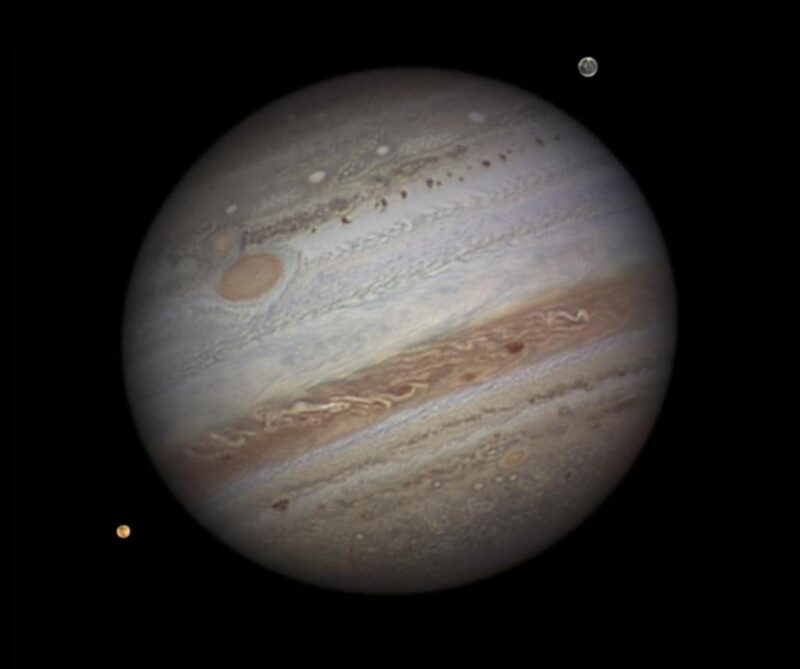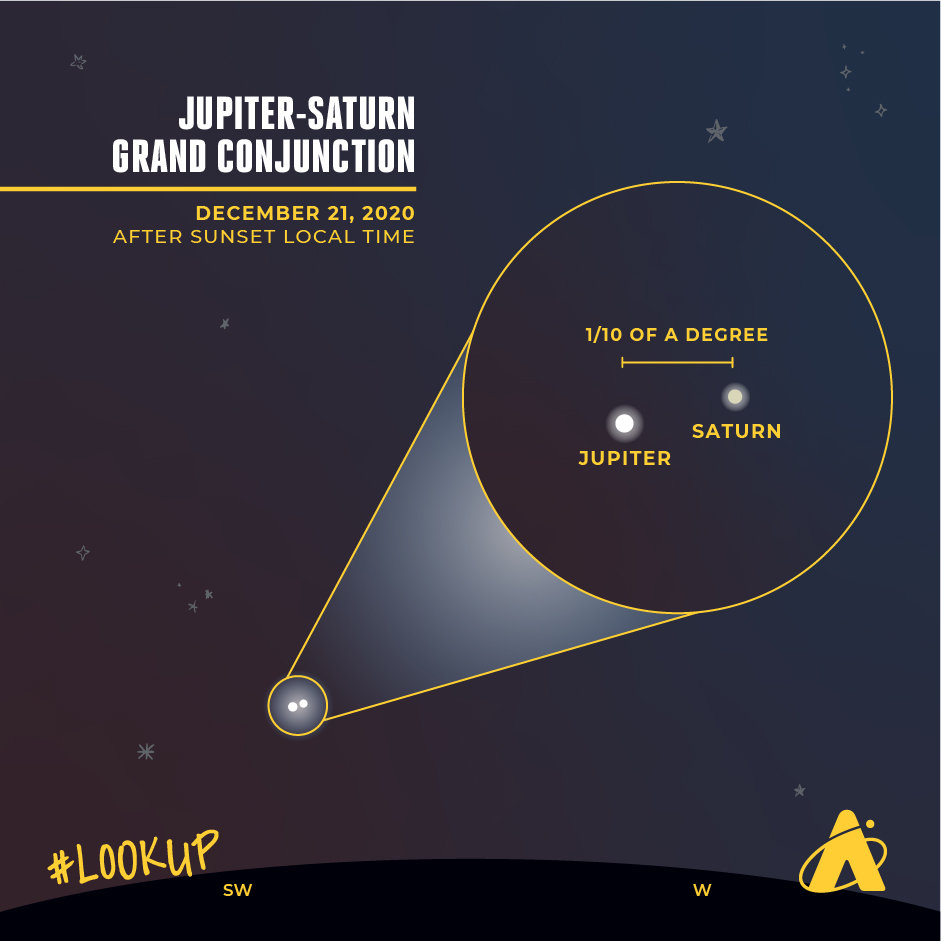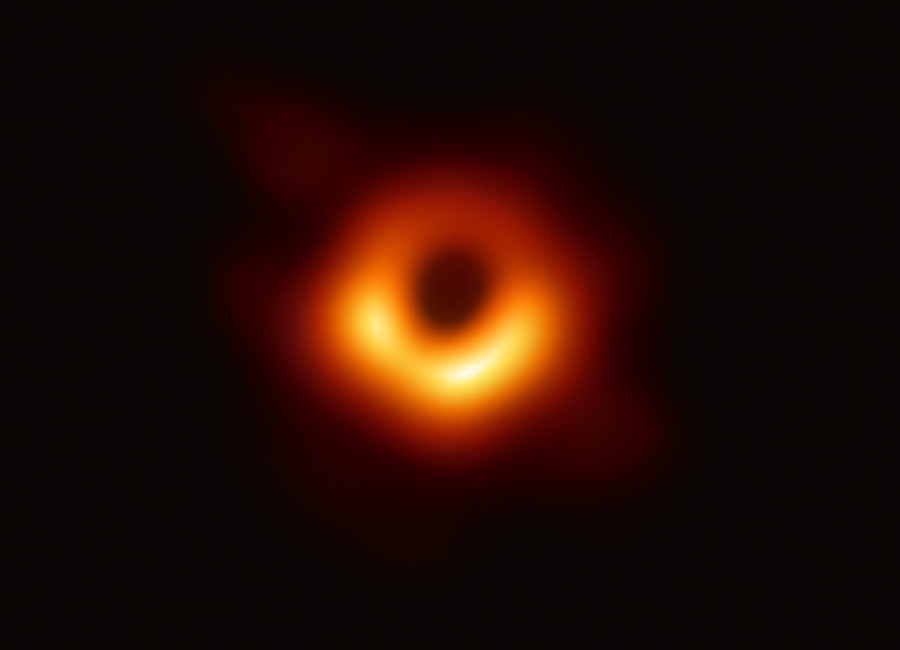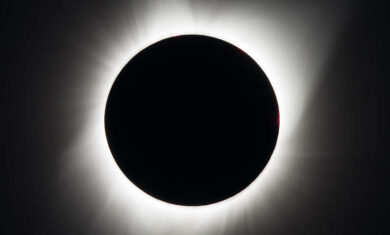Adler Skywatch: December 2020

Header Image: Jupiter and two of its Moons, Io and Ganymede. Image Credit: NASA/Damian Peach
To end this unprecedented year, we’ll all get to celebrate beneath a “Great Conjunction” in December 2020.
For the past six months, the brilliant planet Jupiter and the dimmer (but still bright) planet Saturn have appeared several degrees away from each other in the night sky, in the eastern part of the constellation Sagittarius. In December, the pair appears near the border of Sagittarius and the constellation Capricornus, appearing to move closer to each other as well. Look for them low in the southwest sky shortly after sunset. The evenings of the 16th and 17th, the two planets shine within ten degrees of a slim waxing crescent Moon. But the real show comes the evenings of the 20th through the 22nd. Those nights, Jupiter and Saturn are a mere tenth of a degree apart. It’s an event that occurs roughly every twenty years, which is sometimes called a “Great Conjunction.” This one is a particularly close Great Conjunction—it’s the closest the two planets have appeared since the year 1623.

Other planets are out this month also. The planet Mars is about halfway up the southeastern sky soon after sunset. It glows bright, ruddy, and high in the southern skies each evening. The night of the 23rd, it’s near a waxing gibbous Moon. It’s low in the west about an hour after midnight.
The brightest of the planets, Venus, rises in the east-southeast shortly before the start of morning twilight. The morning of the 12th, an extremely thin waning crescent Moon appears above Venus. It rises later each morning, so as the month progresses the brightening sky will make it more difficult to see; it will be higher and easier to spot earlier in the month.
The planet Mercury appears too close to the Sun this month to be readily visible.
The 2020 winter solstice for the northern hemisphere falls on December 21st, at 4:02 a.m. in the Chicago area. On the winter solstice, the Sun is at its lowest maximum elevation in the sky at local noon. We experience the shortest amount of daylight and the longest night. In the southern hemisphere, the situation is reversed: it’s the summer solstice; the Sun is at its highest in the sky; and those south of the Equator have the shortest night of the year.
Last Quarter Moon: December 7
New Moon: December 14
First Quarter Moon: December 21
Full Moon: December 29
Please note that these descriptions are for the Chicago area, using Central time.
Watch exclusive episodes of Sky Observers Hangout this December! First, our astronomy educators will guide you through the where, when, why, and how of the Geminid and Quadrantid meteor showers on December 7th. Then, they will show you how to spot the extremely rare Jupiter and Saturn Great Conjunction on December 21st, the winter solstice. Subscribe to our YouTube channel to get reminders about all of our online educational astronomy programs, including Skywatch Weekly.







